
7 minute read
Journey into Bees
By Anthony Kilner
When the lid was lifted off the hive exposing the top super (this is one box section of the Langstroth hive), the buzzing of the bees certainly went up a notch, although in a way their sounds were almost meditative and quite calming. When the second super was opened and we delved into the brood box where the queen was hiding, the volume of sound was definitely raised. How dare we expose the queen and her attendees to the light!
This was Jane and my first time being involved in opening a live hive as part of our Journey into Bees with mentor Jacqui Dunbar. For me, it was stay fearless and calm in the face of thousands of bees flying around me. While allergic to bees as a child, I’ve been told by the specialist I’m ok to go now – but it’s still nervy! Jane was as calm as a mountain lake, although nervous about dropping a frame with clumsy glove hands. I have to admit it was an amazing experience and a giant step forward in understanding that bees are very cool indeed! Our journey into bees began several years ago when we attended a local council run bee info workshop. It was a little daunting and we found ourselves thinking yeah-nah, yeah-nah – Nup! The workshop was informative and filled with info, but it seemed like a lot of work. We did a second workshop online during Covid lockdown and were keener – just not quite convinced.
One of our projects during lockdown was to build a fully enclosed orchard which would allow bees and other propagating insects inside, and keep the birds, roos and deer out. While hammering away the conversation turned to pollinators and the lack thereof. Yes, there were bees however not as many as we’d like.
Searching through the local area of Research’s Facebook page, I came across Jacqui Dunbar of Honey and Pollen offering mentoring packages. One message later followed by a long chat, we then met up to discuss our needs and have a site inspection.

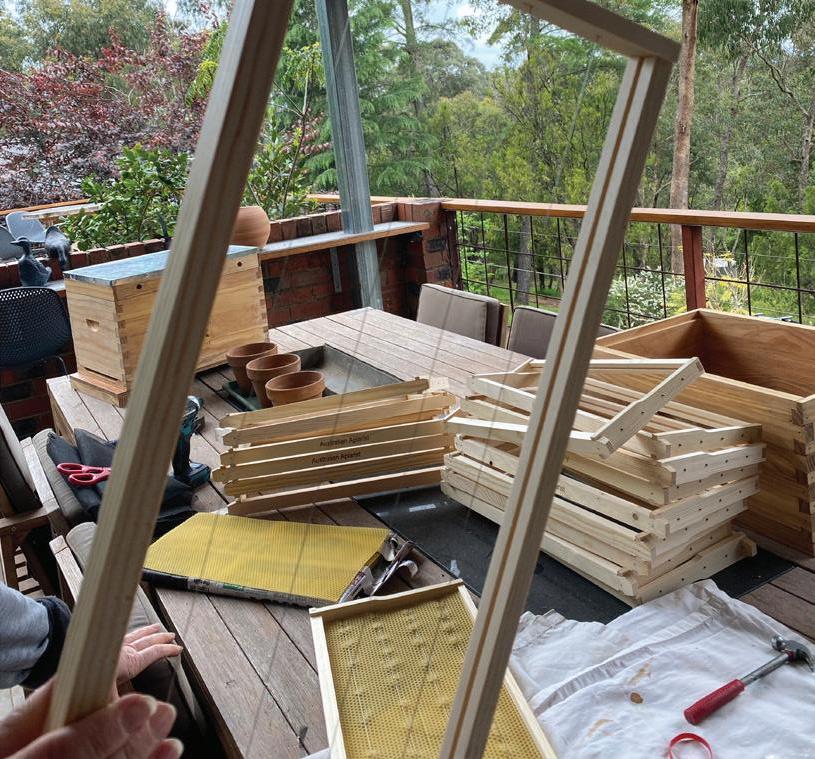
Jacqui has been great in helping us to get everything we needed to start bee keeping in earnest. Our basic kit consisted of suits, gloves, frame tool, brush, and the all-important smoker. We also got our flat-packed Langstroth hive, consisting of base and roof, two supers - one used as a Brood Super/Chamber) and the other is a Honey Super. A Queen excluder, frames, wire and foundation sheets were also included.
We spent a lazy day building the hive, building and adding wire to the frames and then heating and attaching some foundation sheets, so we were ready to go with our Nuc hive when it arrived. The Nuc or Nucleus hive is a small box that houses five frames and comes with a queen and her small family. We opted for a well-bred Italian queen with some excellent laid back attributes. Our colony is very docile which is really important. These guys were so chilled I was sure they must be Jamaican bees, sunning themselves on a beach without a care in the world. Apparently this is a very good thing.
We modified a timber palette adding some gal steel feet to hold the hive above the ground, and finally the day came when Jacqui rocked up with Queen BeeAnna and her court of workers, and bubs in the making. This is where it became ‘hands on’, and we had to get the smoker fired up, get the frames out of the Nuc box and inspect every frame before placing them in their spanking new hive.
We were looking for the queen, babes in cells, honey production, stored nectar for their food and of course checking for any bad bugs which is a crucial part of bee keeping –bugs such as Small Hive Beetle must be destroyed!
Within a short time Queen BeeAnna was settled and the bees started doing what bees do best. Learning where the hive is located, a seemingly complicated orientation program of flying out of the hive and doing lots of figures eights, before heading back in and then out again before longer flights are done.
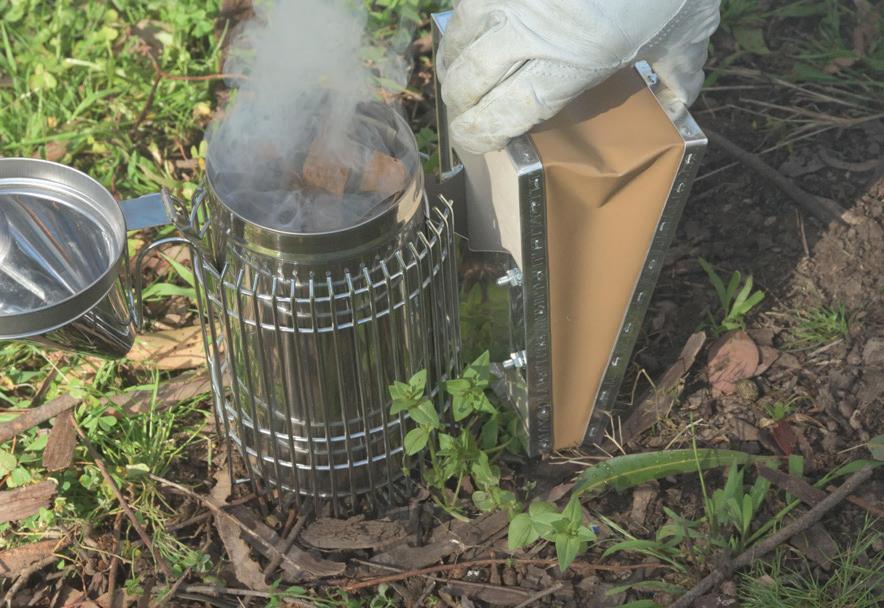

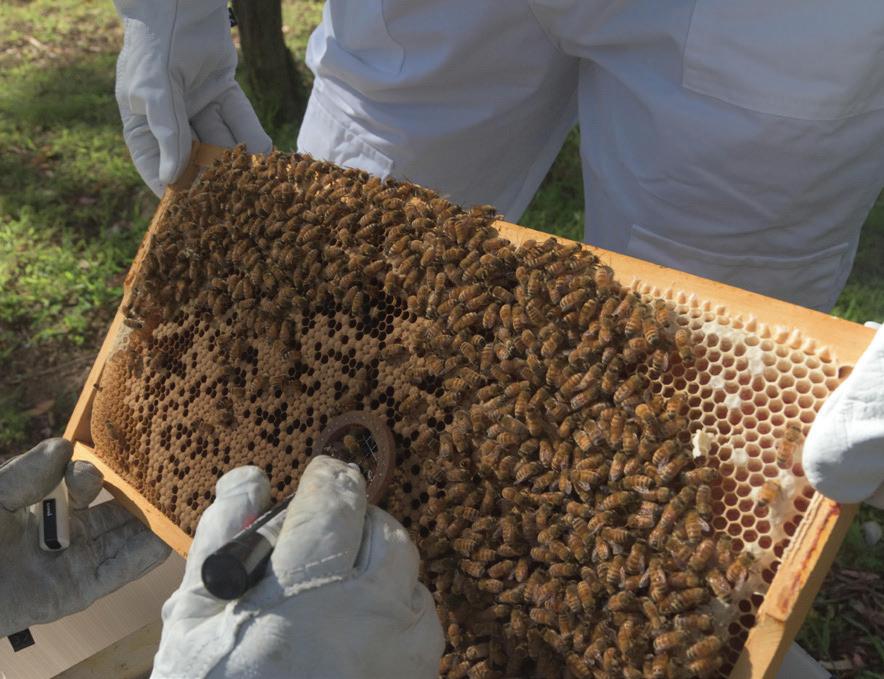
The hive remained shut for two weeks before the next inspection. Again we were checking everything was ok in the hive especially to ensure they had plenty of food. This year the weather in Melbourne has been cold, windy and wet. This means the bees tend not to go foraging for pollen to feed the baby bees and nectar to create honey which the adults eat. In some cases it can lead to a starvation crisis in a hive and extra foods needs to be added. This means if the bees don’t go foraging enough and lots of the pollen blows away, they could end up starving. We are lucky here and they have plenty of food. We’ll be doing regular hive inspections over the next couple of months as we only have the brood box in place as this stage. Soon we’ll add a second Super onto the hive which will encourage the queen to make more babies. Not long after that towards the end of the summer season, we might even get to taste some honey!
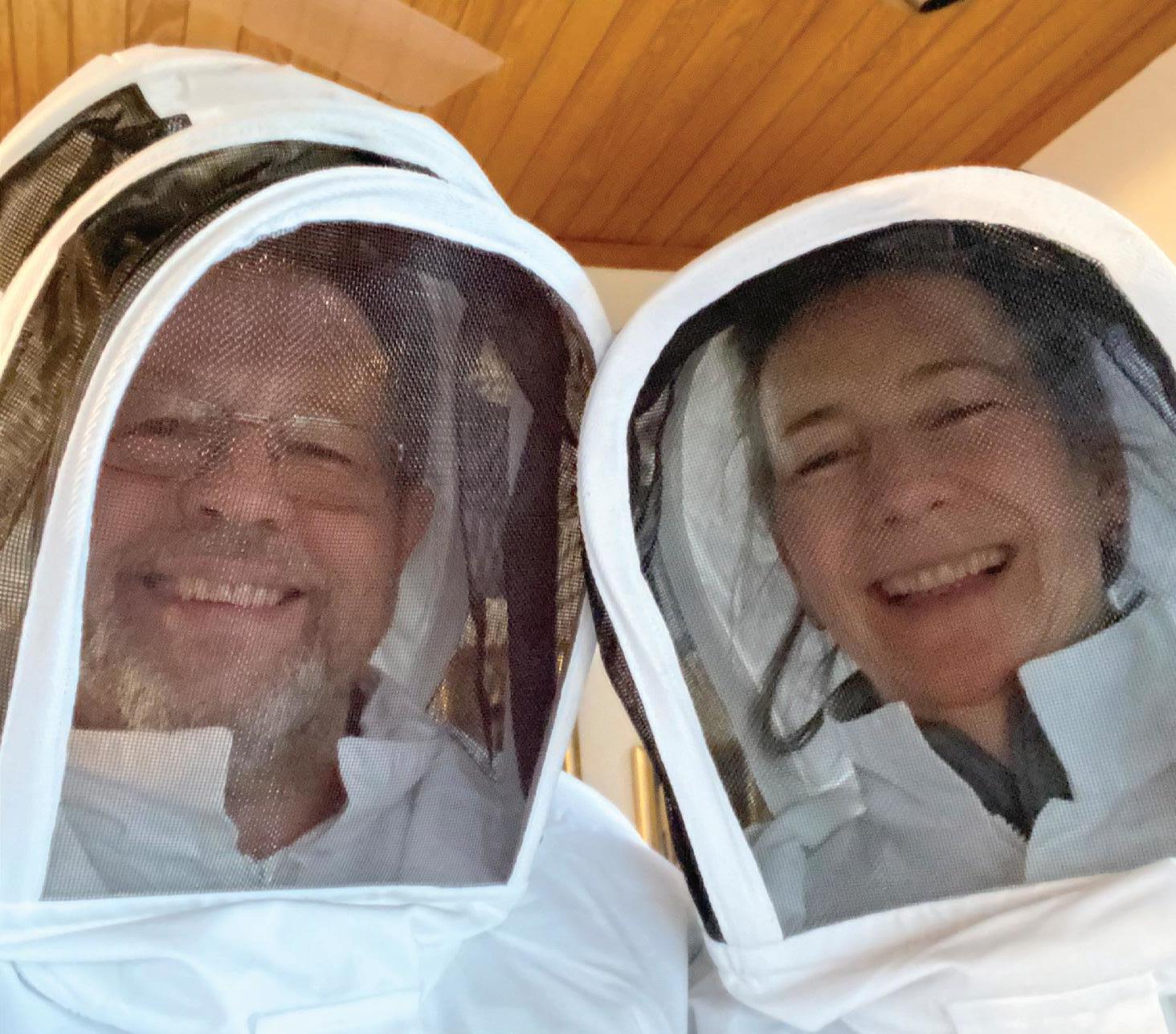
Mentoring
Jane and I have really enjoyed being mentored by Jacqui. She’s able to answer our questions and directly demonstrate her explanations, she’s dived right in and given our journey into bees a sense of ease, and I have to admit made it way more enjoyable than we thought it would bee!
There are mentors, clubs and lots of help available all around Australia for new beekeepers. One thing I’ve noticed so far is that everyone I’ve dealt with in the industry has been polite and very passionate about their Bees. I guess that is not surprising as we are all sharing our passion for bees and the environment, which is universal
Jacquie can be reached via her website Honey & Pollen and there are some great videos and tips on her Facebook
page.
Hives Explained There are plenty of different hives on the market in both new and pre-loved states, some come with bees and some without. The main hives are:
Langstroth Hives were invented in 1852 by Rev. LL Langstroth and are good hives for all apiarists. Each hive can be added to easily. They come in various sizes housing up to 10 frames per super.
Warre Hives (People’s Hive) was invented by a French monk called Abbé Émile Warré in the early 1900s. These hives are
similar to the Langstroth except extra boxes are added from the bottom and they are slightly smaller making them a bit more manageable.
Top-Bar Hives are a long box on legs that makes it easy for the user. It can’t be expanded upon like the others. These hives also have a different frame structure, basically a straight piece of dowel allowing the bees to form natural comb and shape like a triangle. This unit is a simple and effective hive.
Flow Hives were invented by Cedar Anderson and his father Stu to allow easy honey extraction. They do make it a little harder to inspect the hive. The flow hive top sits on top of a Langstroth 8 or 10 frame super.
There are other variations of hives including using polycarbonate in the construction.
Books and further reading
Since we started our journey we have been reading books, joined Facebook groups and generally watched whatever vids we can on the subject. These are all great resources however it’s not until you have the hive at home that everything falls into place.
Rounding Out
Our journey has just begun and it’s an exciting one. We wander down to visit the girls daily and are fascinated by their behaviour. There’s a bucket load more to learn, from regular maintenance during the warmer months to ensuring there’s enough food for the hive to survive the cooler months of winter. There’s pest control, honey to extract and frames to build – all up though we are glad we are doing our bit to help the environment. More bees, more pollination, more food! There are some basic stats that say the food and flower production of plants increases around 20 percent when a hive is introduced to an area.
We’ll keep you posted on our hive’s growth as our journey continues!
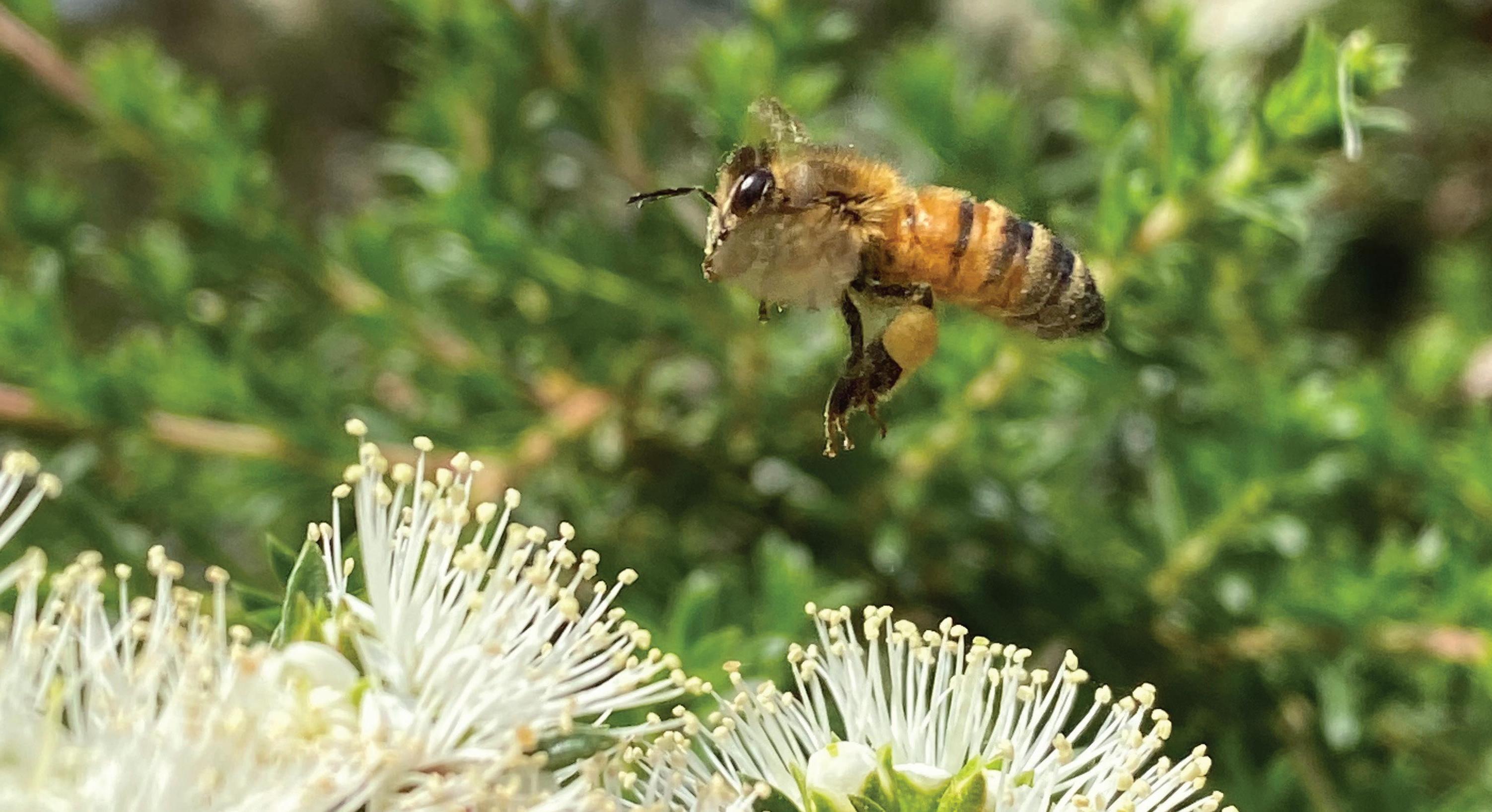
Anthony is available for 1:1 Readings and Bridging Realms Core Issue Vibrational Healing™ sessions.
Image Credit: Anthony Kilner










